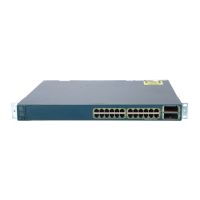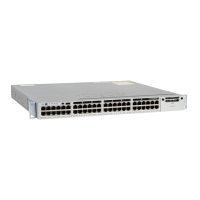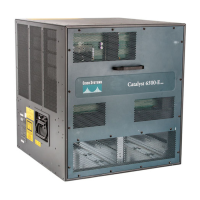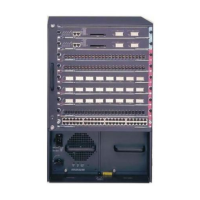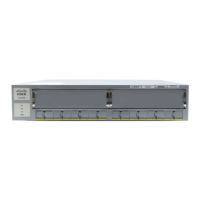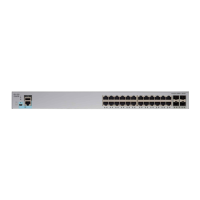28-36
Catalyst 3560 Switch Software Configuration Guide
78-16156-01
Chapter 28 Configuring QoS
Configuring Standard QoS
To return a port to its non-trusted state, use the no mls qos trust interface configuration command. To
return to the default DSCP-to-DSCP-mutation map values, use the no mls qos map dscp-mutation
dscp-mutation-name global configuration command.
This example shows how to configure a port to the DSCP-trusted state and to modify the
DSCP-to-DSCP-mutation map (named gi0/2-mutation) so that incoming DSCP values 10 to 13 are
mapped to DSCP 30:
Switch(config)# mls qos map dscp-mutation gi0/2-mutation 10 11 12 13 to 30
Switch(config)# interface gigabitethernet0/2
Switch(config-if)# mls qos trust dscp
Switch(config-if)# mls qos dscp-mutation gi0/2-mutation
Switch(config-if)# end
Configuring a QoS Policy
Configuring a QoS policy typically requires classifying traffic into classes, configuring policies applied
to those traffic classes, and attaching policies to ports.
For background information, see the “Classification” section on page 28-4 and the “Policing and
Marking” section on page 28-8. For configuration guidelines, see the “Standard QoS Configuration
Guidelines” section on page 28-29.
These sections describe how to classify, police, and mark traffic. Depending on your network
configuration, you must perform one or more of these tasks:
• Classifying Traffic by Using ACLs, page 28-37
• Classifying Traffic by Using Class Maps, page 28-40
• Classifying, Policing, and Marking Traffic by Using Policy Maps, page 28-42
• Classifying, Policing, and Marking Traffic by Using Aggregate Policers, page 28-45
Step 5
mls qos dscp-mutation
dscp-mutation-name
Apply the map to the specified ingress DSCP-trusted port.
For dscp-mutation-name, specify the mutation map name created in
Step 2.
You can configure multiple DSCP-to-DSCP-mutation maps on an
ingress port.
Step 6
end Return to privileged EXEC mode.
Step 7
show mls qos maps dscp-mutation Verify your entries.
Step 8
copy running-config startup-config (Optional) Save your entries in the configuration file.
Command Purpose
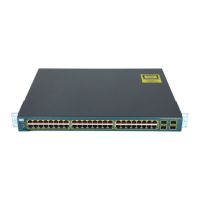
